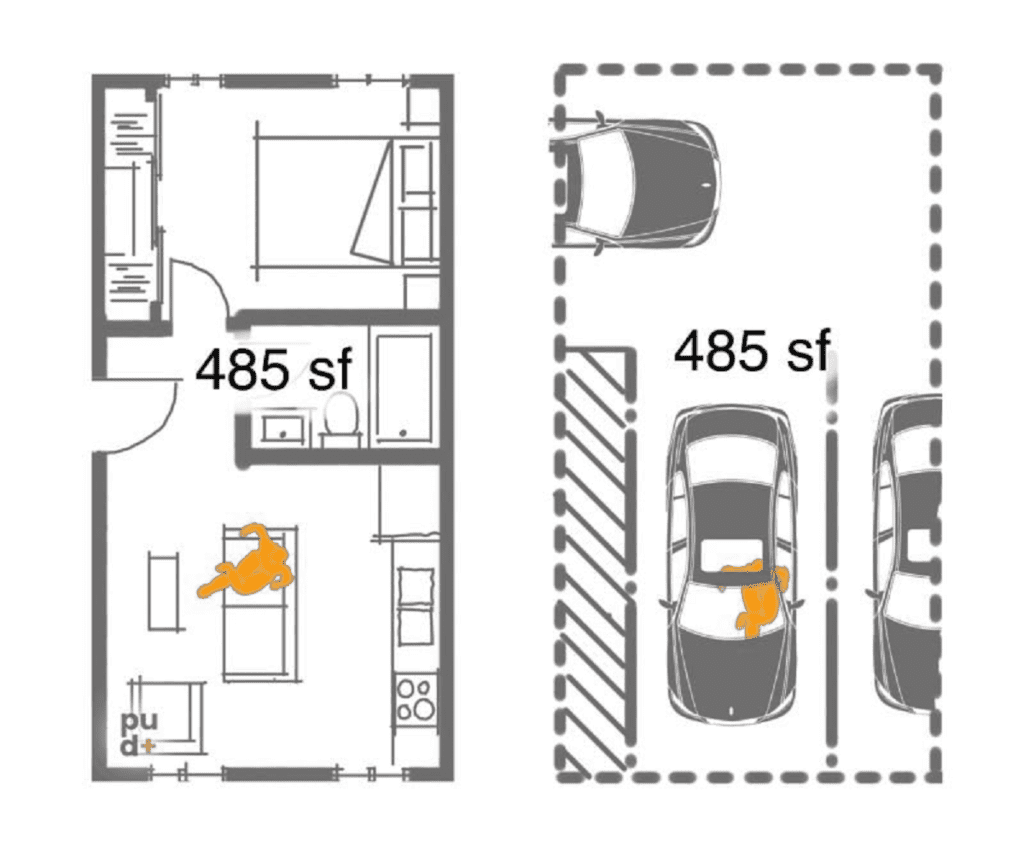Mobility Recommendations
JUNE 2023
Executive Summary
The Livable Communities Initiative (LCI) is Program #131 in Los Angeles’ Housing Element. It is a plan to address LA’s housing, traffic and pollution crisis by building 3-5 story residential buildings above small shops along carefully chosen commercial streets that are transformed to be walkable, bikeable, and livable – creating “15 minute walkable communities.” A key component of the plan is to greatly reduce or eliminate onsite parking, which requires safe and pleasant mobility designed for “8-to-80 year olds”.
Experts
The LCI was developed by community members, stakeholders, experts in housing, mobility, architecture, urban planning, advocacy, and Labor. We worked with mobility experts from around the world to create a plan with the highest chance of success, with a focus on safety for children, and high quality of life. The most well-documented academic expertise is from Dutch universities and think tanks – who are generous in sharing their knowledge. Experts and research we draw from include: Chris Bruntlett, Dutch Cycling Embassy, Niels Van Oort, Associate Professor Public Transport at Delft University of Technology and is co-director of the Smart Public Transport Lab, Roland Kager, data analyst at Studio Bereikbaar and Urban Cycling Institute. Brett Atencio Thomas, the Active Transportation Coordinator of the city of Costa Mesa. Martin Tomasz (Systems Engineer at Apple, and formerly Bird), and Lindsay Sturman (co-host of the podcast Bike Talk), coordinated the research.
World Class Mobility
Mobility comes in five main categories: (1) walking, (2) transit (3) bikes and micro-mobility, (4) Little Electric Vehicles (LEVs) and golf carts, and (5) cars. But high functioning mobility has to be designed and engineered effectively. Like a bridge that is designed to never fail, a plane that always flies, and an Apple product that is intuitive and engaging, streets can be designed so walking, biking and transit “scale” and people rarely drive. Using the best design and engineering, LA can create safe, pleasant dignified mobility that is empathetic to the user experience and will scale up so people will realistically choose to opt into a car light / car free lifestyle. When mobility is done poorly (like it is in almost every American city), people will continue to drive for the vast majority of their trips (90% of trips in LA are by car). But functional mobility is essential so we can build housing without parking.
Here is a guide to the best practices in mobility so residents of a Livable Community (and everyone adjacent) have a dignified, safe, pleasant way to get to everything they need.
1. Walkability
The elements of a walkable neighborhood are:
- Small retail: streets with small shops and Neighborhood Serving Retail, like Larchmont Blvd, are already walkable (as opposed to a big box store like Staples). Lots of shops allow residents to do all of their daily and weekly errands by foot or bike – groceries, restaurants, coffee shops, mail shop, book store, hardware store and a pharmacy. One strategy is to focus LCI’s on LA’s Historic Main Streets and Villages which already have fine grain retail and Legacy Family Businesses that have stood the test of time. LA was a city of 400 villages connected by trolleys, and these Historic Main Streets still exist – Leimert Park, Westwood Village, Abbot Kinney. They have small local shops, giving the neighborhood that “small town feel” that draws in pedestrians to stroll, sit, and shop. Almost any street with fine grain retail has the bones for an LCI.
- Slow cars/No cars: Slowing or removing cars is essential for the walking experience to be pleasant. A street cannot be both a freeway with cars going 50-70 mph (which happens regularly on most corridors in LA), and a charming walking street.
- Amenities: the city can add amenities such as a lush tree canopy, parklets, benches and street furniture, and encourage al fresco dining.
2. Transit
High quality transit is defined as “fast and frequent” – it moves quickly, reliability, and comes at least every 15 minutes. High quality transit scales up to significant ridership, but if transit is slow or infrequent and therefore unreliable, it does not scale up to significant ridership – as very few people will actually take it. Transit can come in multiple forms – buses, light rail, trolleys, Bus Rapid Transit (BRT), heavy rail. LA already has two transit systems – and experts consider LA Metro to be world class transit infrastructure. We also have an expansive bus network – but it lacks reliability. A high quality bus system can be created overnight with a dedicated bus lane and frequent buses – it’s created by painting the street orange (which happens overnight) and fining drivers if they use it.
Building housing like an LCI around transit stops can help scale up our investment in Metro – creating a TOD (Transit Oriented Development). The LCI can complement a traditional TOD – often envisioned as a circle around a high quality transit stop; instead, the LCI can be envisioned as a spoke, or a linear TOD:
Traditional TOD – a circle:

Potential LCI TOD – a spoke:

3. Biking and Micro-Mobility
Micro-mobility includes bikes, adaptive bikes, e-bikes, cargo bikes, scooters, skate boards, and trikes (three wheels with a basket in back for groceries and more stability). Biking expands mobility for people with disabilities and for people who can’t or choose not to drive. Biking also plays an essential role in supporting access to transit – it creates the “First Mile/Last Mile” connection for transit to scale up. But in order for people to actually opt into biking, the data shows that it has to be safe, or only 1-8% of people will opt in (the “fit and the brave.”) But if it’s safe, 80-90% or people will bike.

Pingback: Resources: Car-Lite Communities - Livable Communities Initiative